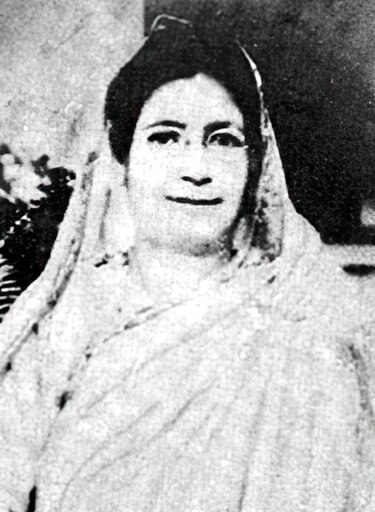
Women Studies and Women Writings: Sultana’s Dream
Examine Begum Rokeya Sakhawat Hossain’s feminist speculative utopian fiction “Sultana’s Dream” with textual references and critical perspectives.
Begum Rokeya Sakhawat Hossain’s Sultana’s Dream is a hallmark experimentalist avant-garde Bengali Renaissance story-telling of magical fantasy and surrealistic utopian fiction, chronicling the documentary testament of women’s revolutionary envisionings toward salvation from patriarchal misogyny within the cosmos of western colonialism. Sister Sara’s acquaintanceship is a blessing of that silver lining foretelling of women’s rights’ movement awareness campaignings throughout the post-futility of egalitarian feminist microcosmic world in Ladyland. As a pioneering forerunner of womens’ literature, the then authorial narratorial personae is considered as a heretic, heathen, pagan, agnostic and sceptic idolatress for her groundbreaking canonical narrative, “Sultana’s Dream”.
Sultana’s exploratory adventure of the utopian wonderland of a promised land of New Jerusalem unravels the audacity and resoluteness of Her Royal Highness’s sovereignty and integrity. The Queen of the swargiya’s boldness, fierceness and aggressive traits are lionized for emerging triumphant victor transcending predatory perpetrators in the visages, masques, personages and imagoes of imperialistic masculine feuding lords. Banishment of zenanas and patronage of mardanas satirically extrapolates the decline of male authoritarian dominance and subsequent uprising of the female reign to throne. This subversion of power polity is a swashbuckling spectacle and furthermore witnesses dilapidation of crumbling hierarchies upheld by traditional conventions of the then milieu. For instance, the domiciling of police commissioners and magistrates into the boudoirs underscores the core essence of female utopian officialdom that doesn’t peremptorily trials lawsuits at the expense of innocent residents of the city of naivety and gullibility. Hence, Sara’s repartee to Sultana’s conspicuous persiflage entails transcendental philosophic humility and altruism, “It is our religious duty to love one another and to be absolutely truthful.”
Despite veiling purdaah of pardanashin culture, women of aristocracy and elitism exhibit unsurpassing charisma in juxtaposition to their countervailing counterparts as showcased by the stalwart public intellectualism/educationalism and iconoclastic socio political treatises of the authoress. Begum Rokeya Sakhawat Hossain’s memorial engraving of Sultana’s Dream enmeshes her modernistic and realistic perspectives of femininity to meteoritic and nebulous phenomenological transformation in the era of scientific revolution and technological progress. This is starkly evident in the embellishments of the accolades and laurels achieved by the Headmistresses and her legion of distinctive comradely school girls in establishing the hall of fame solar and hydroelectric power projects energy schemes. Collective welfarism of the cooperative society is fostered by the solidarity and fraternity of the utilitarian feminist utopia. Restoration and reformation policies abolishing stereotypical obsolete gendered expectations limelights the contributory significance behind the crusade of the wave of feminism that was published in the then The Indian Ladies Magazine Madras (1905).
In this fairyland masculinity is emasculated because of the castration threat [penis effect] and commodification of femininity by the male gaze is thus dismantled. Hence voyeuristic perspectives of masculinity are inverted aftermath of fetishization and libidinization of the masculine objects of feminine subjectivity. The extradition of male in the mardanas have secluded them in a mirror image of the traditional culture of purdah. Effeminacy of men have transformed the role of the women as lionesses and tigresses captivators of “veteran mannish” through male enclosure enchantment. The male characters are deprived of their autonomy and agency through demasculinization and the female characters are overpowered with their calibre and intellect. “Solar ovens, rainwater harvesters, water balloons and pollution free hydrogen aircrafts” are exemplary facets of the ecocritical feminism harboured by the clairvoyance of the Queen of Ladyland: “We dive deep into the ocean of knowledge and try to find out the precious gems, which nature has kept in store for us. We enjoy nature’s gifts as much as we can.” Koh-i-Noor and the Peacock Throne are prospects of metaphorical power relations, power polity and power dynamics that the Ladyland’s Queen disavowed but avowed passive resistance and peace mongering with a consortium of mardanas.
Further Reading, References, Podcasts and Endnotes
Chapter Title: Rokeya Sakhawat Hossain (1880-1932), Women’s Political and Social Thought, An Anthology, Hilda L. Smith and Berenice A. Caroll, Indiana University Press 2000.
Wikipedia Reading
A Brief Textual Analysis of Sultana’s Dream, Sudeshna Majumdar, Assistant Professor of English, Rampurhat College
Behind the Scenes – Sultana’s Dream
56 subscribers
